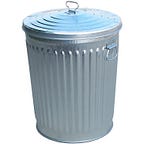Masking and COVID-19: Meta-Analyses, Methodology, Facts, the Truth
Once again, the political climate has made the relevant information surrounding the novel coronavirus even more nebulous than it already was. I am hoping that looking at meta-analyses, or studies on other studies, can help shine a light on the issue of whether the scientific consensus leans towards supporting masks or deeming them relatively ineffective. In this article, I will refrain from inserting preconceived notions about the efficacy of masks and only look at peer-reviewed studies on masks. I do not know if there is an established methodology for searching through meta-analyses so that I do not only find meta-analyses which may or may not unfairly favor a certain disposition, but I figure to hell with it, this is most likely to be more than many other people will do anyway.
Therefore, we will be reviewing three meta-analyses to get some sort of glimpse into the non-partisan truth behind masking.
In this first study, Mingming Liang and Liang Gao, the two main contributors, looked at studies involving several different coronaviruses, from Influenza to H1N1. They narrowed down 21 eligible studies from several electronic databases, with one study being performed in reference to COVID-19. The studies were highly varied, including situations with or without health-care workers, and with different types of masks. They ultimately found that the odds of being infected with a virus were reduced by 65% when wearing masks, although, for the average person, the reduction was only found to be 47%.¹
It seems pretty clear that this metanalysis supports the perspective of those who are adamant about masking. In my experience, I had heard many commentators adamantly purporting the notion that masks have an insignificant effect in protecting the person wearing them, so this experience of researching for myself has changed my perspective and cast doubt on previously held beliefs.
In this second study, 44 other studies were included, a greater number than the first study discussed, including several studies that observe COVID-19 infections. However, like the first study again, most studies included in the meta-analysis were based on MERS and SARS, two other respiratory viral infectious diseases. In this study, the researchers found that wearing N-95, surgical, or 12–16 layer cotton masks reduced the chances of acquiring a respiratory infection from 17.4% to 3.1%. While this study qualitatively describes the certainty of their findings in regard to face masks to be low, the researchers clarify by adding that the certainty is meant to describe the precision of the exact numbers, as opposed to the overall effect that masks have, which has been determined to be very large in this study.²
This second study actually turned out to be quite interesting in regard to other factors affecting the chances of respiratory viral infection like social distancing, so I do recommend that you take a quick look at it yourself, but I will not go into the details in this article. With a second meta-analysis endorsing the use of face masks, whether cloth, surgical, or N-95 in quality, one might assume that masking is indeed supported by available evidence. But to increase the available information that we have and be more sure about the issue, let us continue with more information.
The third study looked at twelve studies and found differing results from the first two meta-analyses. The researchers found considerable differences in the efficacy of cloth masks, surgical masks, and N-95 masks. They found multi-layered cloth masks to be about 38% efficient, while N-95 masks were found to be over 95% efficient. Considering this information, they still recommended the use of cloth masks in indoor and crowded spaces. The study also details several methods to maintain the efficacy of cloth masks, such as having multiple layers, not using chemical washes that may affect the effectiveness of the mask and proper fitting and wearing of the mask.³
I think this last study offered more of a different perspective from the other studies by emphasizing the differences between masks while maintaining that masks are effective in reducing viral transmission. It also appeared to be catered more to the layman by mentioning certain behaviors that increase the risk of infection that are well-known in the medical community, like repeatedly touching your mask.
I hope that you consider thinking about how you come to your beliefs after this article. How much might your beliefs have changed after learning about some of the numbers surrounding masking that have been put out by the scientific community? Should you place such a large amount of faith in the sources of information that you may have previously trusted that you make major behavioral decisions based on them? Maybe are you willing to reevaluate other issues by looking through a variety of research papers that illustrate more nuance and detail than other outlets? Masking became a contentious issue in 2020, but I hope it functions well as an example of how we should seek more information before coming to a quick and certain judgment of an issue.
[1] Mingming Liang et al., “Efficacy of Face Mask in Preventing Respiratory Virus Transmission: A Systematic Review and Meta-Analysis,” Travel Medicine and Infections Disease 36 (2020), https://doi.org/10.1016/j.tmaid.2020.101751.
[2] Derek K Chu et al., “Physical Distancing, Face Masks, and Eye Protection to Prevent Person-to-Person Transmission of SARS-CoV-2 and COVID-19: a Systematic Review and Meta-Analysis,” The Lancet 395, no. 10242 (2020): pp. 1973–1987, https://doi.org/10.1016/s0140-6736(20)31142-9.
[3] Sureshk Sharma, Mayank Mishra, and Shivk Mudgal, “Efficacy of Cloth Face Mask in Prevention of Novel Coronavirus Infection Transmission: A Systematic Review and Meta-Analysis,” Journal of Education and Health Promotion 9, no. 1 (July 28, 2020): p. 192, https://doi.org/10.4103/jehp.jehp_533_20.
